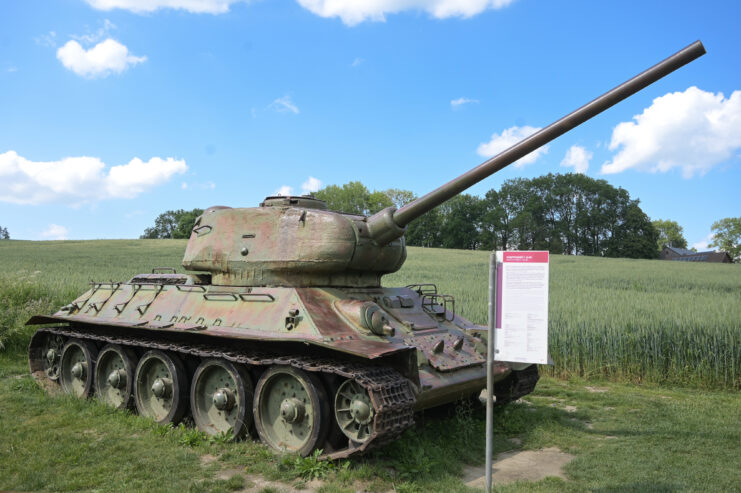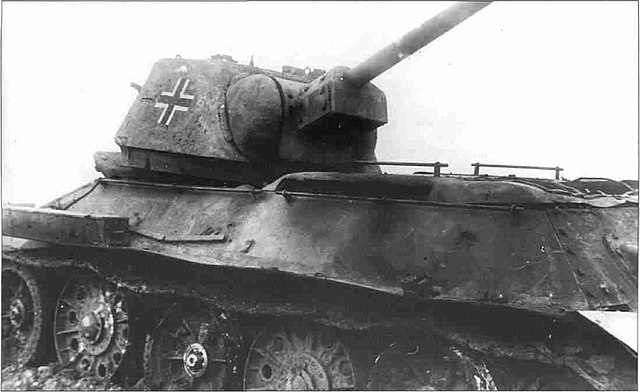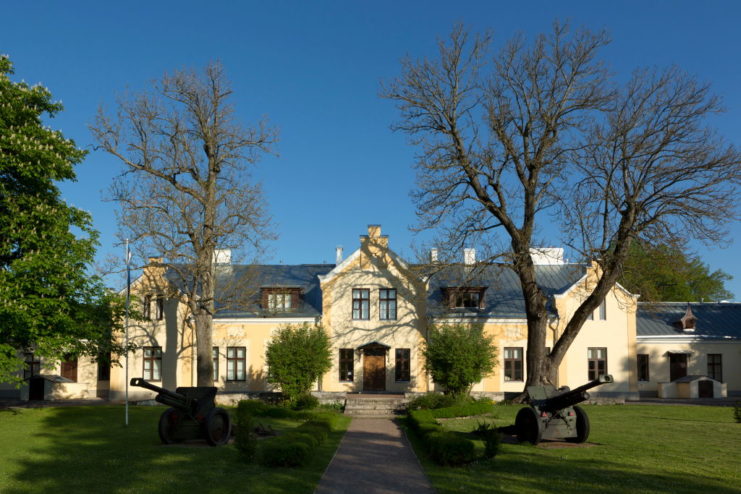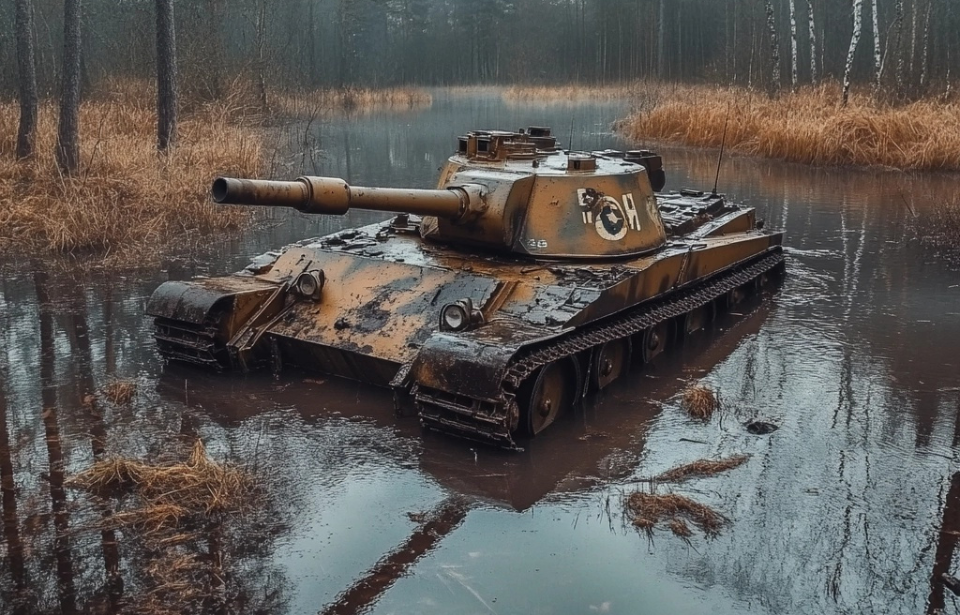A brief history of the Soviet T-34

Before one can understand the magnitude of such a discovery, they must first be given a proper history on the T-34. Introduced into service with the Red Army in 1940, this medium tank became the most-produced of the Second World War, as well as the second most-produced of all time, after the T-54/T-55. A total of 84,070 were built: 35,120 of the original model and 48,950 of the T-34-85 variant.
The T-34 initially featured the 76 mm tank gun M1940 F-34 as its main armament, with two 7.62 mm Degtyaryov (DP) machine guns providing additional firepower. While not as heavily armored as other tanks during the war, it had a unique sloped design, which effectively protected the vehicle and its crew of four from anti-tank weaponry. Pair all this with wide tracks and a V12 diesel engine, and the Soviets had a leg up on their German opponents.
Germany Didn’t know about the T-34 until Operation Barbarossa

Prior the the German invasion of the Soviet Union, better known as Operation Barbarossa, the Wehrmacht wasn’t aware of the T-34’s existence, nor that of the powerful Kliment Voroshilov (KV) heavy tank. They, therefore, believed they would encounter little resistance as they made their way across the Eastern Front. The Germans were surprised by the strength of the Red Army’s tank divisions and subsequently increased the development of their own tank technologies.
The T-34, however, wasn’t without its faults, and by the final years of the war found itself being outmatched by newer tanks. That being said, it continued to see service with the Soviet Union and its allies, including during the Korean War and the Angolan Civil War. The North Vietnamese Army (NVA) even equipped troops with the T-34-85 during Operation Lam Son 719 and the 1975 Spring Offensive, among other Vietnam-era engagements.
Battle of Narva

Having established the significance of the T-34 tank, let’s set the stage for the capture of this particular vehicle. From February to August 1944, intense battles unfolded between the Germans and the Red Army along the 50 km-wide Narva Front in northeastern Estonia. This offensive proved particularly deadly, with casualties exceeding 100,000 killed and over 400,000 wounded.
During this time, the German Army’s Detachment “Narwa,” reinforced by volunteers and Estonian conscripts, clashed with the Soviet Leningrad Front over control of the strategically crucial Narva Isthmus. This offensive saw two major engagements: the Battle for Narva Bridgehead and the Battle of Tannenberg Line.
As an extension of the Leningrad-Novgorod Offensive, the Red Army established bridgeheads on the western bank of the Narva, while German forces held several on the eastern side. The Germans consistently repelled Soviet attempts to advance. In the end, the Soviet objective of reclaiming Estonia as a staging ground for seaborne and airborne attacks against Finland remained unachieved.
Capture and abandonment of a Soviet T-34

Discovery of the Soviet T-34

More than 50 years later, the boy—now a grown man—remembered what he saw in 1944 and shared his story with Igor Shedunov, the leader of a local war history club. Curious to find out if a tank was really hidden in the lake, the club decided to investigate.
Luckily, the club had two teams: one made up of experienced scuba divers trained in underwater exploration and recovery, and another focused on searching above ground. The underwater team, led by Mihail Zenov, carefully examined Lake Mätasjärv.
At first, there were no obvious signs of oil or lubricant on the water’s surface to give away the tank’s location. But after a thorough search, the divers finally found it—submerged about seven feet underwater, buried under a thick layer of peat and silt nearly 10 feet deep.
A coordinated effort to retrieve and repair

After the T-34 was discovered, efforts were set in motion to recover it from the depths of Lake Mätasjärv. On September 12, 2000, a Komatsu D375A-2 was used to pull it from its submerged location. Upon reaching the surface, the war history club identified it as a T-34/76A and found an unexpected 116 shells inside. Although it had been underwater for around 56 years, the tank was in remarkably good shape, showing no signs of rust. All its systems, except for the engine, remained operational.
In the aftermath of the tank’s recovery, news of the T-34’s finding spread, attracting the attention of then-Estonian President Lennart Meri, who came to view it.
According to Estonian law, the club was unable to claim ownership of the tank for a period of five years. Once the waiting period was over, the club members embarked on a comprehensive restoration project to bring the T-34 back to its former glory, including a full overhaul of its many components.
Where is the Soviet T-34 today?

The current whereabouts of the T-34 are unknown. Some sources claim it was last seen on display at the Estonian War Museum in the village of Gorodenko, while others have said it was awaiting reassembly at the war history club’s workshop near Sirgala, in the northeast.
More from us: Relic Hunters Surprised By What They Discovered In WWII-Era Bomber
Wherever it may be, military and history enthusiasts alike hope the T-34 is being well cared for. This tank is an important piece of history and one of the few surviving examples of the fighting that occurred on the Narva Front during World War II. It would be a shame for it to be lost (again).
